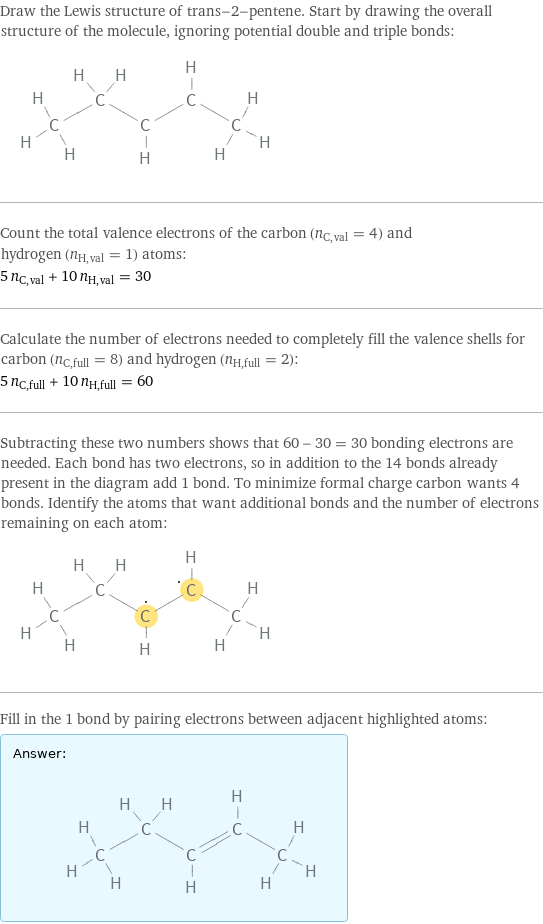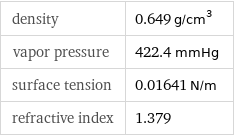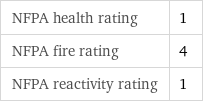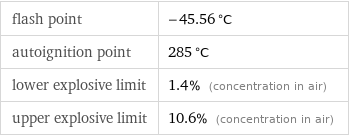Input interpretation

trans-2-pentene
Chemical names and formulas

formula | C_2H_5CH=CHCH_3 Hill formula | C_5H_10 name | trans-2-pentene IUPAC name | (E)-pent-2-ene alternate names | 2-pentene, (E)- | 2-trans-pentene | (E)-2-pentene | (E)-pent-2-ene | trans-beta-amylene | trans-beta-N-amylene mass fractions | C (carbon) 85.6% | H (hydrogen) 14.4%
Lewis structure

Draw the Lewis structure of trans-2-pentene. Start by drawing the overall structure of the molecule, ignoring potential double and triple bonds: Count the total valence electrons of the carbon (n_C, val = 4) and hydrogen (n_H, val = 1) atoms: 5 n_C, val + 10 n_H, val = 30 Calculate the number of electrons needed to completely fill the valence shells for carbon (n_C, full = 8) and hydrogen (n_H, full = 2): 5 n_C, full + 10 n_H, full = 60 Subtracting these two numbers shows that 60 - 30 = 30 bonding electrons are needed. Each bond has two electrons, so in addition to the 14 bonds already present in the diagram add 1 bond. To minimize formal charge carbon wants 4 bonds. Identify the atoms that want additional bonds and the number of electrons remaining on each atom: Fill in the 1 bond by pairing electrons between adjacent highlighted atoms: Answer: | |
3D structure

3D structure
Basic properties

molar mass | 70.14 g/mol phase | liquid (at STP) melting point | -140 °C boiling point | 37 °C density | 0.649 g/cm^3
Units

Liquid properties (at STP)

density | 0.649 g/cm^3 vapor pressure | 422.4 mmHg surface tension | 0.01641 N/m refractive index | 1.379
Units

Thermodynamic properties

specific heat capacity c_p | liquid | 2.239 J/(g K) molar heat capacity c_p | liquid | 157 J/(mol K) specific heat of formation Δ_fH° | gas | -0.4548 kJ/g molar heat of formation Δ_fH° | gas | -31.9 kJ/mol molar heat of fusion | 8.35 kJ/mol | specific heat of fusion | 0.119 kJ/g | critical temperature | 471 K | critical pressure | 3.52 MPa | (at STP)
Chemical identifiers

CAS number | 646-04-8 Beilstein number | 1718795 PubChem CID number | 5326161 PubChem SID number | 24847019 SMILES identifier | CCC=CC InChI identifier | InChI=1/C5H10/c1-3-5-4-2/h3, 5H, 4H2, 1-2H3/b5-3+ RTECS number | SB2184500
NFPA label

NFPA label

NFPA health rating | 1 NFPA fire rating | 4 NFPA reactivity rating | 1
Safety properties

flash point | -45.56 °C autoignition point | 285 °C lower explosive limit | 1.4% (concentration in air) upper explosive limit | 10.6% (concentration in air)

DOT hazard class | 3 DOT numbers | 2371
Toxicity properties

RTECS classes | other